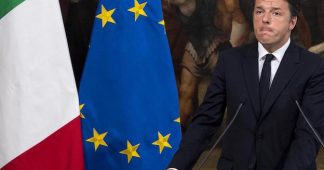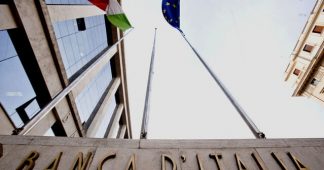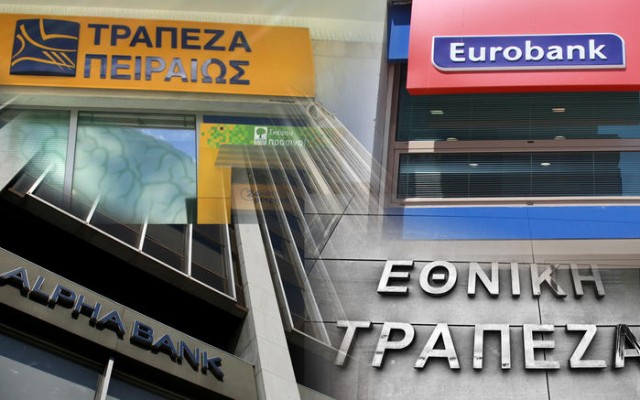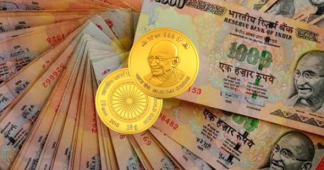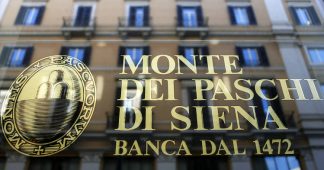by
The Italian government has launched a package of extraordinary measures to handle the crisis at Veneto Banca (VB) and Banca Popolare di Vicenza (BPVI). The two Venetian banks have long been under surveillance by the Single Supervisory Mechanism (SSM) of the ECB due to repeated breaches of the supervisory capital requirements. A first extraordinary intervention dates back to one year ago when the fund Atlas – funded by Italian banks and by Cassa Depositi e Prestiti (80 percent State-owned) – subscribed to capital increases for the two banks for a total of €2.5bn.
Despite Atlas’s intervention, later in 2016 the ECB called for the two banks to increase their liquidity, and shortly afterwards came new requests for recapitalization amounting to €6.4bn. The Italian Government, in an attempt to avoid the bankruptcy of the two companies, asked the Single Resolution Mechanism (SRM) to free the way for a precautionary recapitalization with public funds, arguing for the systemic relevance of VB and BPVI. The European authorities, however, put conditions on the State entering into ownership of the two banks by insisting on a co-participation of private funds for at least €1.2 bn. But private investors – already forced to account for losses in their investment in Atlas – showed no interest, hence increasing the risk of a resolution of the two banks and the ‘zeroing’ of the exposures not only of shareholders and subordinated bondholders but also of senior bondholders and depositors as provided by the bank recovery and resolution directive (BRRD).
At the last moment, the Italian Government found an escamotage (sleight of hand) that avoided the bail-in (protecting about €30bn of savings in deposits and senior bonds) and wound up the two banks, partly guaranteeing business continuity through the involvement of Banca Intesa. But this has not been a private bailout because Intesa (already a shareholder in Atlas) has not invested any new funds in the two Veneto banks. Instead, the Milan-based bank has offered to take over a selection of the BPVI and VB businesses corresponding to safe assets and liabilities (€26bn of good loans, €12bn of senior notes and €24 bn of deposits) in exchange for just 1 euro.
Shares and subordinated notes (€1.18bn including €0.18bn of bonds sold to retail investors) will be ‘zeroed’ as provided by the rules on burden sharing, while the non-performing loans of the two Veneto banks (€10.5bn, net of provisions) will be transferred to the Società Gestione Attività (SGA), a publicly-owned company founded in 1996 to handle the default of Banco di Napoli.
Cash in bank
To ensure the presence of Intesa – considered indispensable by the DG Competition of the European Commission – the Italian government had to pay cash to the bank worth more than €5bn as compensation for the restructuring costs of the two Veneto banks and for the risk of a capital shortfall. A further €12bn has been allocated as public guarantees to give Intesa the opportunity to hand back to the State the loans should they become problematic in the future.
The liquidation of the two banks will therefore be particularly onerous for the Italian government, struggling these days also with the crisis of the Monte dei Paschi di Siena (MPS) whose rescue plan envisages a recapitalization funded largely by the State (€6bn) that would become a majority shareholder with a 70% stake.
In total, the rescue of the three banks could cost €23bn (17 for the Veneto banks + 6 for MPS), the equivalent of a fiscal consolidation for a country already burdened by a huge public debt (132% of GDP).
On the other hand, the outcome of the plan for Intesa which has acquired the best assets of VB and BPVI to become the first bank of the Veneto by local presence is very positive.
The Italian government has avoided the resolution of the two banks (which could have triggered a crisis of confidence with bank runs in the case of depositors’ bail-in), but it paid dearly for the approval of the European authorities which have imposed the involvement of Intesa even though without any private capital disbursement.
A better solution
An indirect nationalization of the two banks through the SGA would undoubtedly have been a preferable solution. The SGA could have enacted a maxi-securitization of all the assets of the two Veneto banks and not only of non-performing loans. It would have been enough to create a special purpose vehicle charged to buy the entire loan portfolio of VB and BPVI and to fund the operation by offering on the market asset-backed securities split into multiple tranches. The inclusion of performing loans within the collateral portfolio and the structuring of a senior unsecured tranche and a mezzanine tranche secured through public guarantees would have allowed access at relatively low-cost to a large pool of investors even with a low risk appetite, reserving the junior tranche to speculative investors.
In this way, the cost-benefit profile of the rescue plan would have been much more sustainable for the public sector. Moreover, the SGA was the ideal candidate to implement such a solution: since its inception, this company has been under public control by virtue of the pledge to grant the right of the State to convert its stake into outright ownership in 2016.
The European authorities could have raised objections on admissibility of the operation: the SGA officially became a public company in 2016, and thus after the Commission’s Communication on the Banking Sector which allows State aids to banks that were already public property at the time of its entry into force (August 2013). But, faced with similar objections, the Italian Government would have had more than an argument in its favor. In fact, the pledge guarantees a number of rights (including voting rights) that are very close to ownership. In the specific case of the SGA, the public nature of the company is confirmed also by the very low price by which the State bought the company in 2016 by paying just €600,000 for a company that had €450 million in cash. Actually, the Italian Government did not pay the full market price of the SGA simply because the company was already a public asset.
Moreover, Italy would have deserved some tolerance from the EU authorities also considering that, in the recent past, many other Eurozone countries (including Germany, the Netherlands, France and Spain) have rescued domestic banks with public funds and often – as in the case of Spanish banks in 2012 – with money coming from their European partners, including Italy. The only difference is that in the meantime the regulatory framework has been changed in a more punitive way and creates an unacceptable disparity between countries with a high presence of the public sector in bank ownership (such as Germany) and those where banks are instead in the hands of the private sector (like Italy).
It’s time to bring the right issues to the attention of Europe: starting with the undisputable argument that, since the outbreak of the global financial crisis, core countries led by Germany have forced the adoption of a set of provisions with the sole aim of deleveraging their exposure to the risks of the periphery. This Germano-centric attitude has to change: some degrees of flexibility should be admitted and new tools should be enacted to manage the problems on a common basis, at a federal level. A European-wide deposits’ guarantee scheme and a European asset management company charged to handle the issue of non-performing loans in the banks of all member countries would be initial and fundamental steps in this direction. Otherwise, European integration will remain a pipe dream.
* Marcello Minenna is Head of the Quantitative Analysis Unit in Consob (the Italian Securities and Exchange Commission). He has also taught Quantitative Finance at Bocconi University and at the London Graduate School of Mathematical Finance. He is a regular writer for The Wall Street Journal and for Corriere della Sera as well as member of an advisory group that supports the economic analysis of the biggest Italian trade union CGIL.
